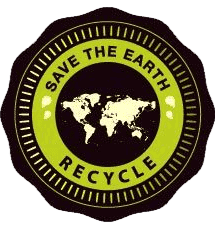 Landfills, also known as dumps, are something few people understand. You drop off your garbage at the landfill, or you pay a waste management company like Eagle Dumpster Rental to do it for you.
Landfills, also known as dumps, are something few people understand. You drop off your garbage at the landfill, or you pay a waste management company like Eagle Dumpster Rental to do it for you.
But what happens to your trash in the landfill after you drop it off? Does it get absorbed into the ground? Do they burn it? Do they recycle it?
To help you answer those questions, we’re giving you all of the secrets about how landfills work – and where your trash goes after your rental dumpster is picked up.
There’s More Engineering than You Think
You might call it a “dump”. Sanitation engineers, however, may get insulted. There’s a surprising amount of science behind your local landfill.
Typically, the place you call a “dump” is known as a Class 3 landfill that accepts municipal solid waste (MSW). It’s where most of your household garbage ends up when you live in a city.
Class 3 landfills are scientifically-engineered facilities built into or on the ground. They’re designed for one specific purpose: to hold and isolate waste from the environment.
Today, federal and state regulations strictly govern the way landfills work. Federal and state laws, for example, dictate the location, design, operation, and closure of Class 3 landfills. Without these laws, human health – and the environment – could be at risk.
How Trash Gets to the Landfill
Today, most states – including Pennsylvania and Delaware – are reducing the number of landfills. Instead of having many smaller landfills located across the state, governments are choosing to have a smaller number of larger landfills.
Typically, your trash gets from your home to your nearest landfill by a garbage truck. If you rented a dumpster from Eagle Dumpster Rental, then we’ll take it to the landfill for you.
An average garbage truck can hold 12 to 14 tons of waste. To put that number in perspective, an average mid-sized car weighs about 1.5 tons, and many larger SUVs and trucks weigh 2.5 or 3 tons.
12 to 14 tons of waste is approximately the same amount of waste that comes from 800 to 850 homes. Once your local garbage truck is full, the truck heads to the landfill. The landfill weighs the truck, the truck dumps the waste (usually, just by tipping its container), then the truck is weighed on the way out. The garbage truck moves on to another neighborhood to repeat the process.
How Landfills Work and Manage Trash
A well-designed landfill consists of six crucial components, including each of the following:
1) The Bottom Liner System: This liner prevents trash from seeping into the groundwater. It typically consists of two feet of clay, a plastic liner, and a two foot thick protective layer (usually sand).
2) Cells: The cells of a landfill are specific areas where trash is dumped and crushed.
3) Storm Water Drainage System: Without a drainage system, rain would wreak havoc on a landfill. The storm water drainage system collects rainwater using plastic pipes (and other equipment), then relocates the water to a pond before it comes into contact with the garbage.
4) Leachate Collection System: This system collects liquids (called leachate) that come into contact with the garbage. This water is collected and treated before being re-introduced to the environment.
5) Methane Collection Systems: When garbage decomposes, it generates methane gas (and carbon dioxide). Landfills have a capture system for this methane, which reduces the risk of explosions and burns.
6) Final Covering/Cap: The final covering or cap is placed on top of a Class 3 landfill when it’s closed. This typically consists of 18 inches of clay, a plastic liner, and two feet of soil.
Landfills are designed to last 30 to 50 years. Governments typically prepare to monitor landfills for 30 years after they close. And that’s how garbage gets from your home, into your rental dumpster, and into a landfill.
